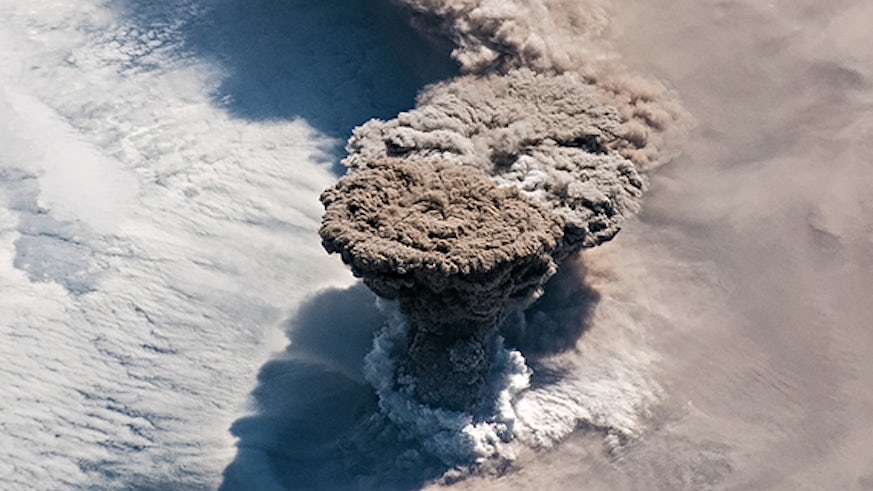Nature Geoscience paper sheds new light on ‘goldilocks’ zone for subvolcanic magma chambers
30 August 2019

Researchers have shed new light on subvolcanic magma chambers that reside below the Earth’s crust which will add to our knowledge of volcanic processes.
Dr Wim Degruyter from the School of Earth and Environmental Sciences carried out the research along with colleagues from Brown University in the US and ETH Zurich in Switzerland.
The new study was published in Nature Geoscience this August and has developed our understanding of eruptions in the Earth’s crust.
The magma chambers that feed recurrent and often explosive volcanic eruptions tend to reside in a very narrow depth range within the Earth's crust. The researchers found why this goldilocks zone exists.
The scientists used thermomechanical modelling to look at the processes occurring in the magma chambers and how they evolve over time. They showed that storage pressure is controlled by volatile exsolution and crustal rheology. The models showed that two factors: the ability of water vapour to bubble out of the magma, and the ability of the crust to expand to accommodate chamber growth, are the key factors constraining the depth of magma chambers, which are generally found between 6 and 10 kilometres deep. In general the pressure increases with depth so that those around 6 kilometres tend to have pressures or about 1.5 kilobars while those at lower depths can have about 2.5 kilobars of pressure. Between pressures of 1.5 and 2.5 the systems can erupt, recharge and maintain themselves.
The models showed that at pressures of less than 1.5 kilobars, trapped water within the magma can lead to violent volcanic explosions. The magma in the chamber is then not replaced in the same volume and the chambers cease to exist. At pressure of more than 2.5 kilobars warm temperatures deep inside the Earth allow the chamber to grow without erupting as the rocks surrounding the chamber are soft and pliable. Over time the magma cools and solidifies without ever erupting.
For some time scientists have known that there seems to be a particular depth at which magma chambers continue to erupt. This is the first study to explain the processes controlling this.
Dr Degruyter said: “This research is important because it will deepen our knowledge about the processes governing volcanic eruptions. It is also critical to understand these processes as magma breaking through the Earth’s crust releases CO2, sulphur, and other gases which can affect climate.”